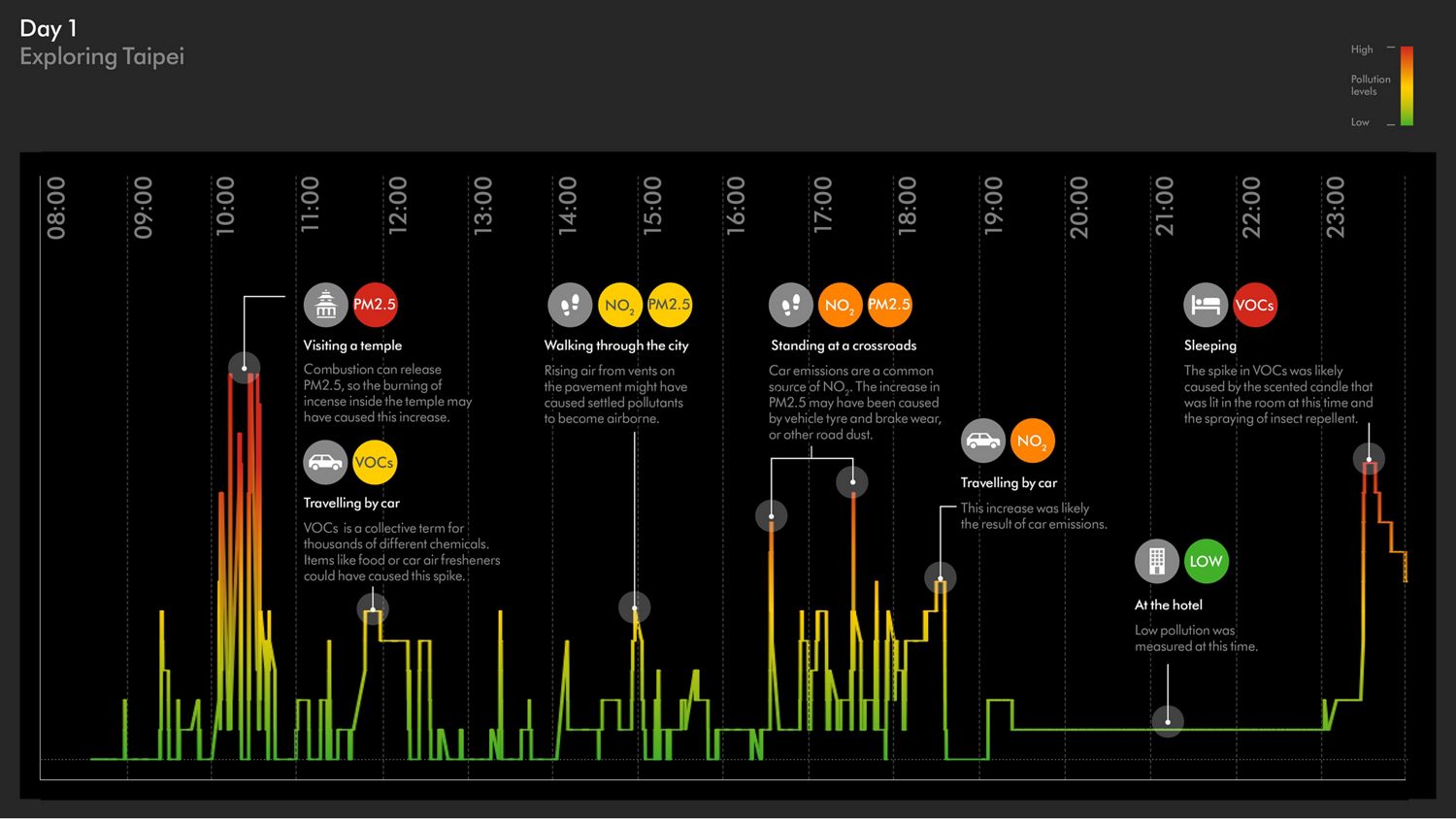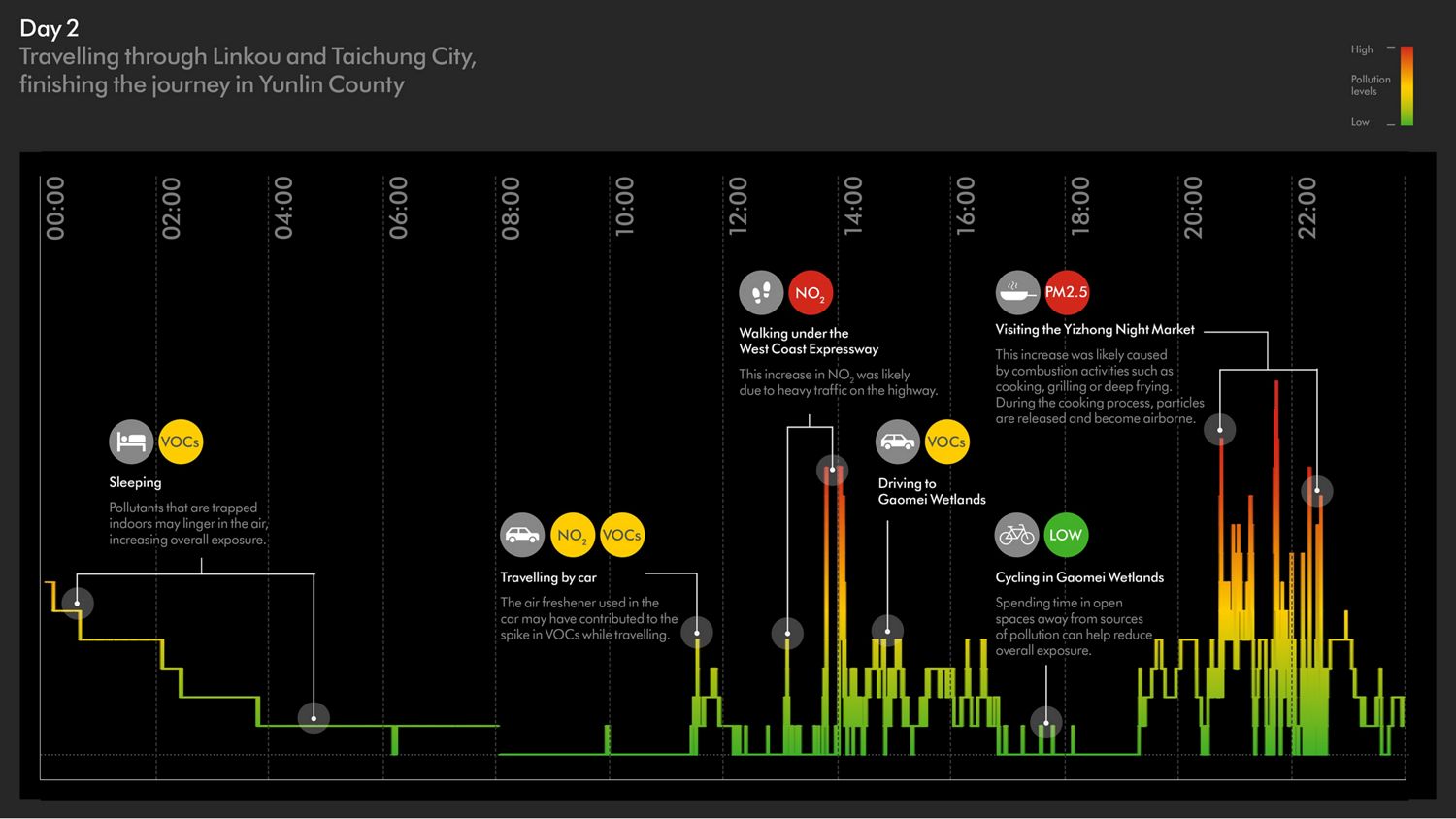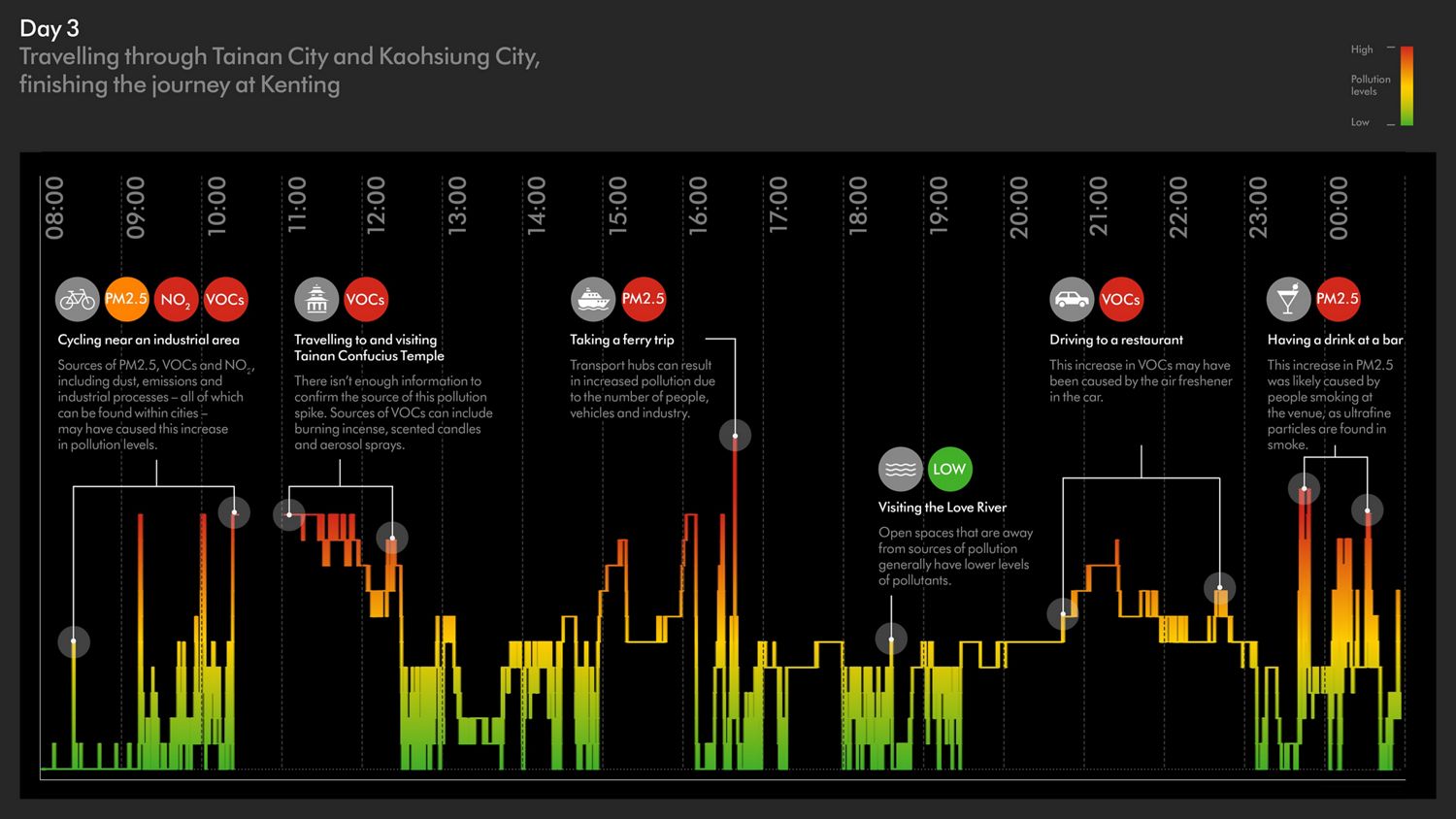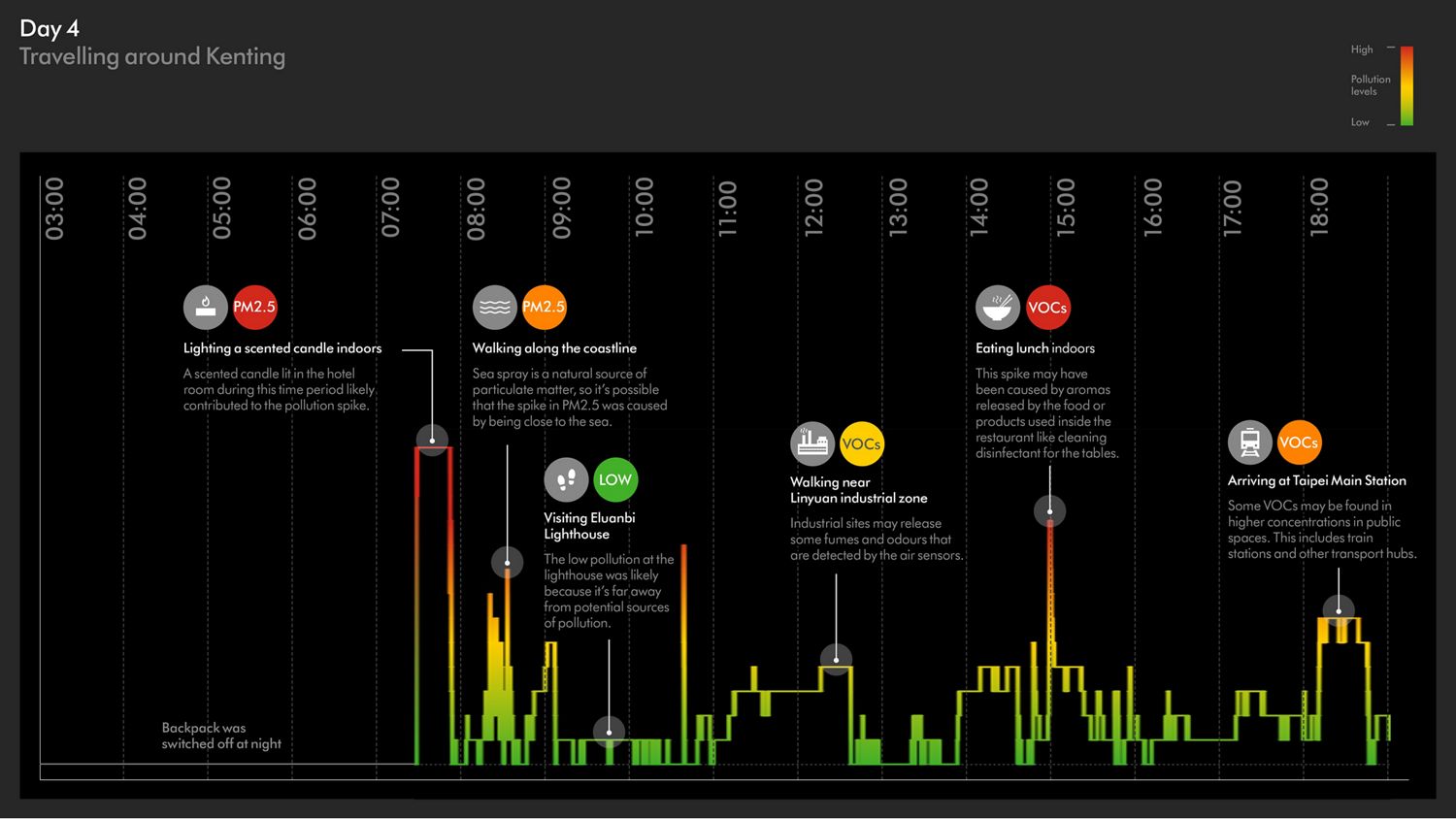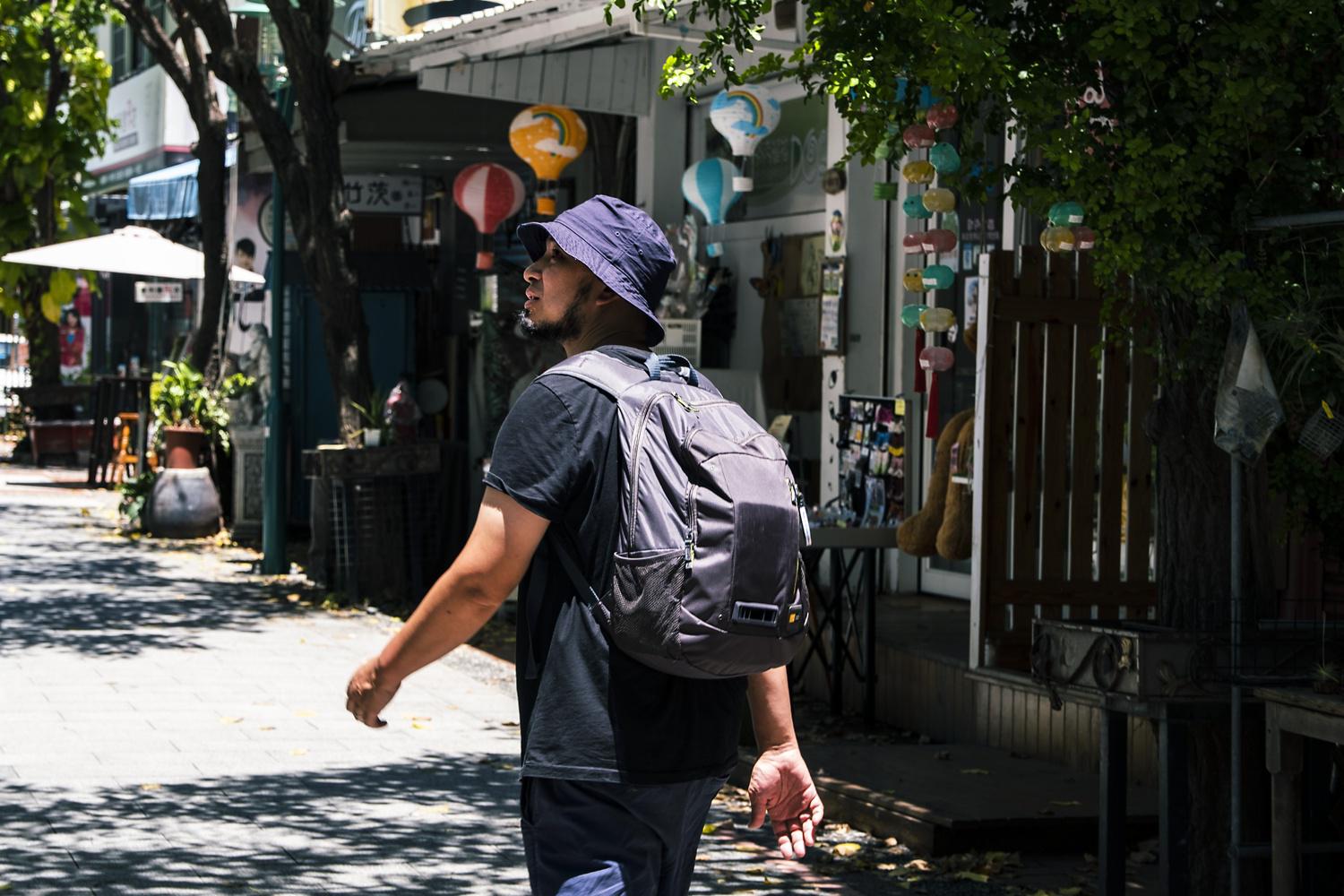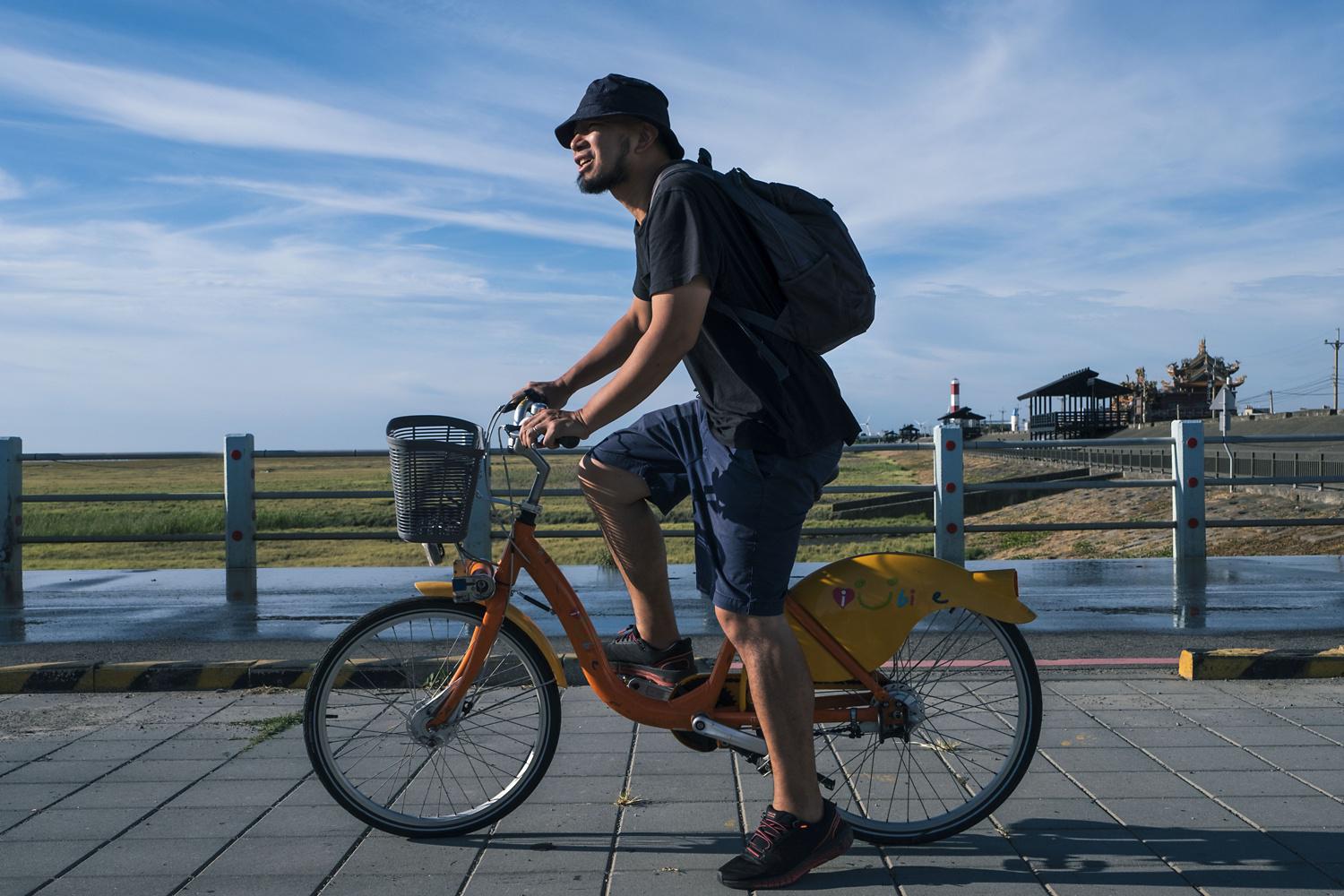Daily air diet: Exploring urban pollution with Dyson’s air quality backpack in Taiwan
Continuing our global research into air quality, we equipped YouTuber Alex Lam with our air quality backpack on a journey through Taiwan, passing from Taipei in the North to Kenting in the South.
9 September 2020
-

-
Taking a four-day trip along the length of Taiwan, YouTuber Alex Lam is one of a group of individuals across the globe who are working with us to raise awareness about air pollution in cities around the world.
Re-working existing sensing technology used in our air purifiers, the air quality backpack is a portable air sensing device which collects air pollution data on the move. With on-board sensors, a battery pack and GPS, we’re researching personal exposure to air pollution around the world and how to avoid it.¹
“I wanted to do the backpack project with Dyson as it’s interesting to understand air quality from a personal exposure perspective," said Lam.
“I think that people often make assumptions about air quality but are not actually aware of the pollutants that they might be exposed to as they go about their daily life."
“Dyson’s air quality backpack collected the air quality data throughout my four day trip, allowing me to understand what activities and pollution events contributed to my overall pollution exposure during this time.”
- Alex Lam
-
With travel restrictions causing many to opt for a ‘staycation’ this year, Lam’s journey with the air quality backpack represents a popular travel route for both locals and tourists when holidaying in Taiwan. Starting in the North, he travelled from Taipei all the way to Kenting in the South, passing through a total of seven cities.
With the trip completed, our engineers analyse the findings by pairing the air sensor and GPS data from the backpack with Lam’s diary entries, documenting his daily activities. With this information, our engineers can help piece together the cause of the pollution and how people can look to lower their exposure in the future.
The air quality backpack was initially developed by our engineers for the Breathe London study with Kings College London and the Greater London Authority. As a result of the study findings, 31 per cent of the children said they would change the way they commute to and from school. With projects taking place around the world, we hope to use the air quality backpack to empower individuals to actively reduce their personal air pollution exposure, while raising awareness about air quality around the world.
In June 2017, we donated 1,856 purifiers to 594 kindergartens in nine cities in Taiwan, in a bid to improve the study environment for children and to promote the importance of indoor air quality. The results were shared to raise awareness of indoor air quality for school children in Taiwan.
“Our engineers have developed intelligent sensors using knowledge derived from years of experience and research in air cleaning technology,” said Alex Knox, Vice President of Environmental Care.
“Using our unique algorithm to process detailed reports of air pollution exposure, this innovative technology allows us to monitor air quality indoors, outdoors and on the move. What’s more, it all fits within a backpack.”
-
Alex's Results¹
Using a car as his primary form of transport between cities, NO2 levels increased by more than six times for Lam, levelling at a 339.15ppb average during the car journey. Vehicle emissions are a common source of NO2 with traffic fumes being a likely source of this increase. Meanwhile, the use of an air freshener inside the car may have contributed to the peak in VOCs detected while on this journey¹, which was four times higher than levels detected in the hotel that morning.
“We often see a peak in NO2 around vehicles as traffic emissions are a common source of this pollutant,” said Dyson Engineer Jess Rowley, who was involved in Alex’s data analysis.
“If ventilation and filtration inside the vehicle cabin is poor, pollutants can build up as polluted air is recirculated and becomes trapped inside. While it may not always be possible to avoid this exposure entirely, taking simple measures such as avoiding peak travel times, opting for routes with less traffic and considering the type of transport you are using can all help to reduce personal exposure levels overtime.”
-

-
In addition, NO2 and PM2.5¹ were frequently detected as Lam walked around the city and visited public spaces. PM2.5 levels increased by more than eight times¹ when he visited a temple in Taipei. This was likely the result of combustion from the burning of incense inside.
Moreover, when Lam left the temple and waited at some crossroads with heavy traffic, his personal exposure to NO2 more than doubled. Vehicle emissions are associated with NO2 pollution, while vehicle tyre and brake wear can also release PM2.5 particulates.
Other sources of PM2.5 during the four day trip included a visit to the night market in Yizhong, which at one stage saw concentrations rise to 400.20 µg/m3. This PM2.5 spike was likely caused by food cooking on open grills and the released particles as they became airborne. This, combined with cycling near the West Coast Highway, led to the highest cumulative exposure to PM2.5 that day.
-
Levels of pollution were also detected while Lam was resting inside his hotel at the end of the day. Between 23:00 and 07:00 that night, the backpack recorded average VOC levels of 760ppb, higher average levels detected than at any stage the previous day. Lighting a scented candle during this period, Lam also sprayed insect repellent which both likely contributed to this increase. Pollutants that are trapped inside may linger in the air, increasing overall exposure.
When cycling at the Gaomei Wetlands, the average concentration of PM2.5 measured decreased by 75% compared to cycling close to West Coast Highway where traffic concentration is higher. The average AQI level at Love River was 2.6, less than half the average recorded in the car journey to the bar after the trip. Open spaces may have lower levels of pollutants particularly if they are away from traffic and other sources of pollution.
-

-
“I was surprised by how much our daily behaviours can impact the quality of the air we breathe,” said Lam following the analysis. “This shows that to some extent, we can take control of our personal exposure to air pollution.
“The increase in pollution when lighting a candle in the evening, and the rise in PM2.5 while sitting close to people smoking at the bar wasn’t something I expected and I’m definitely planning to pay more attention to my behaviours indoors and in public spaces to try to reduce my overall exposure.”
An algorithm was developed by Dyson to convert the gas sensor resistance readings to ppb values for both VOCs and NO2 and combines readings from PM2.5 and PM10.
Press contacts
-
Liv Thomas
-


